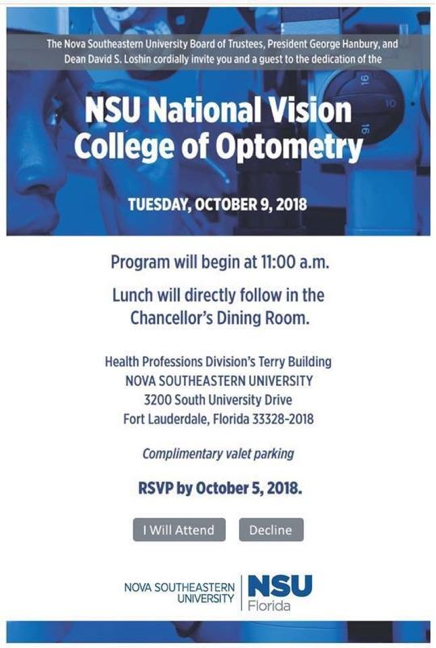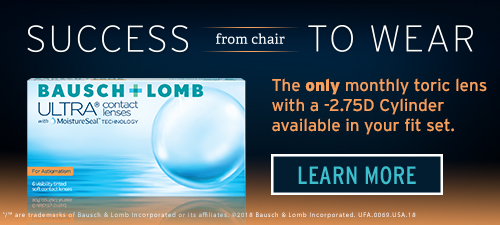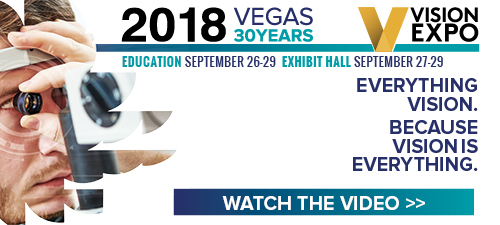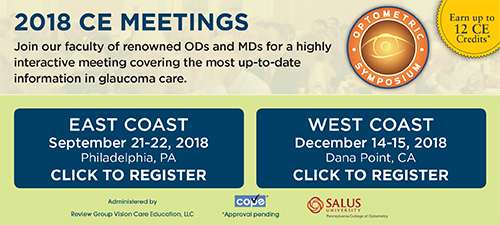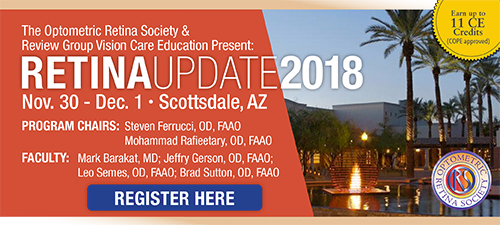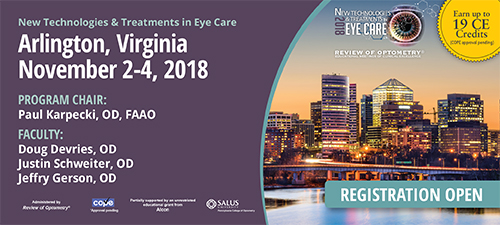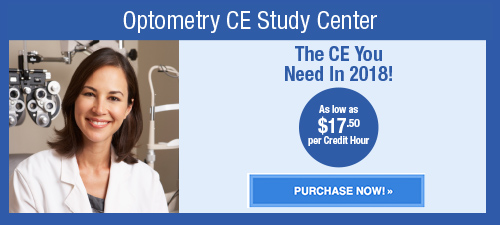
A
weekly e-journal by Art Epstein, OD, FAAO
Off the Cuff: Don’t Say I Didn’t Warn You
Nova Southeastern University College of Optometry recently announced that it is changing its name to NSU National Vision College of Optometry, supposedly after National Vision bought the school…I mean made a huge donation. This seems all too similar to optometry programs in Europe where eyeglass shops train their own optometrists. Despite reassurances to the contrary, it will likely make it easier for NSU grads to find jobs at National Vision’s clinical centers of excellence like Eyeglass World and America’s Best Contacts and Eyeglasses.
|
||||||
 |
||
| Efficacy and Safety of Yttrium-aluminium Garnet (YAG) Laser Vitreolysis for Vitreous Floaters | ||||
Researchers examined the efficacy and safety of yttrium-aluminium garnet (YAG) laser vitreolysis for the treatment of vitreous floaters. Consecutive adult patients with symptomatic vitreous floaters who attended Chongqing General Hospital from April to December 2016, were included in this prospective study. Patients had > 3mm between the vitreous opacity and retina/lens and acceptable quality peri-papillary optical coherence tomography (OCT) images (i.e., signal strength ≥ 5). Those with history of glaucoma, severe cataracts, vitreous haemorrhages, retinal holes and/or macular disease were excluded from the study. Best-corrected visual acuity (BCVA) and non-contact intraocular pressure (IOP) were measured before and for up to six months post-YAG laser vitreolysis. Anterior segment photography and peripapillary retinal nerve fiber layer (RNFL) measured by OCT were taken before and six months post-procedure. Questionnaires on patient satisfaction were completed six months post-procedure. No statistically significant differences in BCVA and IOP were observed before or after treatment. Anterior segment photography showed that vitreous opacities partially or completely disappeared after YAG laser treatment. The thickness of RNFL in four directions (upper, below, nasal and temporal) was not statistically significant different before or six months after the procedure. Seventy-five percent of patients reported significant improvement, and 25% reported moderate improvement. The results of this study conducted in a cohort of 30 Chinese patients showed that YAG laser vitreolysis was a well-tolerated and effective treatment for vitreous floaters. Researchers suggested that randomized, controlled trials involving large numbers of participants monitored over an extended follow up period would be required to confirm the results. |
||||
SOURCE: Luo J, An X, Kuang Y. Efficacy and safety of yttrium-aluminium garnet (YAG) laser vitreolysis for vitreous floaters. J Int Med Res. 2018; Sep 10. [Epub ahead of print]. |
||||
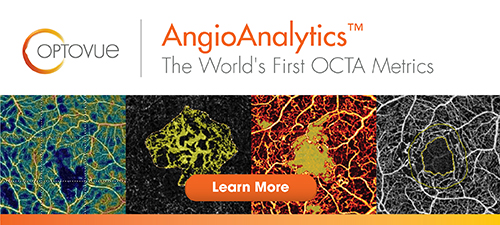 |
||
| Efficacy of Contact Lens Care Solutions in Removing Cholesterol Deposits From Silicone Hydrogel Contact Lenses | ||||
This study determined the efficacy of multipurpose solutions (MPSs) on the removal of cholesterol deposits from silicone hydrogel (SH) contact lens materials using an in vitro model. Five SH lens materials: senofilcon A, comfilcon A, balafilcon A, lotrafilcon A and lotrafilcon B were removed from the blister pack (n=4 for each lens type), incubated for seven days at 37°C in an artificial tear solution containing C radiolabeled cholesterol. Thereafter, lenses were stored in a preserved saline solution control (Sensitive Eyes Saline Plus) or cleaned with one of the five MPSs incorporating different preservatives (Polyquad/Aldox, polyquaternium-1/alexidine, polyquaternium-1/PHMB and two based on PHMB alone) using a rub and rinse technique, according to the manufacturer's recommendations, and stored in the MPS for a minimum of six hours. Lenses were then extracted with 2:1 chloroform:methanol, analyzed in a beta counter and the μg/lens of cholesterol was determined.
Balafilcon A and senofilcon A lens materials showed the highest amounts of accumulated cholesterol, whereas lotrafilcon A and lotrafilcon B deposited the lowest amounts. For all lens materials, the MPS preserved with Polyquad/Aldox removed more deposited cholesterol than any other test solution; however, the amount of removed cholesterol contamination from the individual contact lenses was only statistically significant for balafilcon A and senofilcon A. Sensitive eyes and the other evaluated MPSs showed no significant effect on cholesterol removal. Cholesterol-removal efficacy varied depending on the combination of lens material and solution. Only one MPS showed a statistically significant reduction of cholesterol deposit for only two of the five tested lens materials. |
||||
SOURCE: Walther H, Subbaraman LN, Jones L. Efficacy of contact lens care solutions in removing cholesterol deposits from silicone hydrogel contact lenses. Eye Contact Lens. 2018; Aug 30. [Epub ahead of print]. |
||||
|
|||
| Changes in the Optic Nerve Head Induced by Horizontal Eye Movements | ||||
Investigators assessed the effect of eye movement on the optic nerve head (ONH) using swept-source optical coherence tomography (SS-OCT), and measured the degree of ONH changes. They enrolled 52 healthy subjects 20 to 40 years of age and performed a prospective, observational study. Both ONH and macula were imaged simultaneously using wide volume scans of the SS-OCT in the primary and different gaze positions. Horizontal eye movements were used to obtain OCT images in abducted and adducted eyeball positions. Multilateral three-dimensional registration was used to process and analyze the images to measure the degree of ONH changes. The mean axial length (AXL) was 25.73mm ± 1.42mm and the mean spherical equivalents was -4.49D ± 2.94D (The proportion of high myopia was 39.4%). Significant morphologic changes were observed in the ONH during abduction and adduction. In abduction, the overall ONH tissues were elevated, and the mean area of elevation was 115,134μm2 ± 9,424μm2. In adduction, the mean areas from two perspectives, which were nasal or temporal, and peripapillary tissues or optic nerve cupping were 95,277μm2 ± 73,846μm2, 34,450μm2 ± 44,948 μm2, -108,652μm2 ± 91,246μm2 and -30,581μm2 ± 46,249μm2, respectively. Elevation in abduction and elevation of nasal peripapillary segments in adduction were positively correlated with AXL. Investigators found significant morphologic changes in the ONH in both abduction and adduction, and these changes were associated with AXL. Considering the morphologic changes as physical properties enabled a better understanding of the biomechanical characteristics of the ONH. |
||||
SOURCE: Lee WJ, Kim YJ, Kim JH, et al. Changes in the optic nerve head induced by horizontal eye movements. PLoS One. 2018;13(9):e0204069. |
||||
|
|||
| News & Notes | |||||||||||||||||||||||||||||
NORA Recognizes Five ODs for Advancing Neuro-optometric Rehabilitation
|
|||||||||||||||||||||||||||||
| Avedro Announces Cigna Coverage, Names Homer as VP of Health Policy Avedro announced that 50 commercial insurance plans now cover Avedro’s FDA-approved corneal cross-linking procedure, following Cigna’s recent announcement that it is covering the Photrexa drug formulations and the KXL System used in the treatment of progressive keratoconus. Patients can find an updated list of plans at LivingwithKeratoconus.com with coverage policies. In addition, the company announced that Tim Homer joined as vice president of health policy and market access. Previously, Homer worked at IRhythm as vice president of health policy and market access, where helped grow revenue to more than $100 million. Before that, he led global reimbursement and market access activities at HeartWare and served in similar capacities at Boston Scientific and Johnson & Johnson. Read more.
|
|||||||||||||||||||||||||||||
| National Industries for the Blind Enters Into Strategic Alliance National Industries for the Blind announced a strategic alliance with the William L. Hudson BVI Workforce Innovation Center to deliver training and professional development for people who are blind. The William L. Hudson BVI Workforce Innovation Center, located in Wichita, KS, focuses on training people with vision loss, placing them into jobs and providing accessibility inclusion expertise to businesses. The NIB and BVI Workforce Innovation Center alliance has set a goal of creating 500 new jobs for people who are blind or visually impaired by 2022. Read more. |
|||||||||||||||||||||||||||||
|
|||||||||||||||||||||||||||||
|
Optometric Physician™ (OP) newsletter is owned and published by Dr. Arthur Epstein. It is distributed by the Review Group, a Division of Jobson Medical Information LLC (JMI), 11 Campus Boulevard, Newtown Square, PA 19073. HOW TO ADVERTISE |

